The idea of cemeteries as public spaces, and perhaps even third places, seems to intrigue people. I was surprised to get an alert to an article that includes a crematorium in Goa, India as a third place. “The Moksha crematorium in Panaji, Goa, by Rahul Deshpande and Associates, is a unique community space shared by Hindus, Shias, Sunnis, and Lingayats to perform the last rites and rituals for the departed.”
US Americans have long had a taboo about death,1 which probably explains why we celebrate Halloween - a consumer event (billions spent on sweets and fast fashion) - instead of All Souls Day or the Day of the Dead. Here in New England there are many small cemeteries, and they are generally well tended. I think of some as pocket cemeteries, small plots surrounded by forest on back roads that probably once had small communities. But no one goes there: they often haven’t been used for burial for many, many decades.
On the other hand, other cultures make much of their graveyards. You may have seen a lot of skulls and skeletons associated with Día de Muertos, but I always think of billowing gold and orange flowers, and flower petals. This photo comes from a trip to Guadalajara for the International Leadership Association conference. Everywhere I went there were marigolds, in festoons, baskets, and, as you see here, painted tin cans.
The Thrillist article I was interviewed for a few months ago, about cemeteries as third places in Istanbul, led to quite a lot of correspondence. The journalist, Eric Beyer, was kind enough to share more photos of the ancient cemeteries in that city.
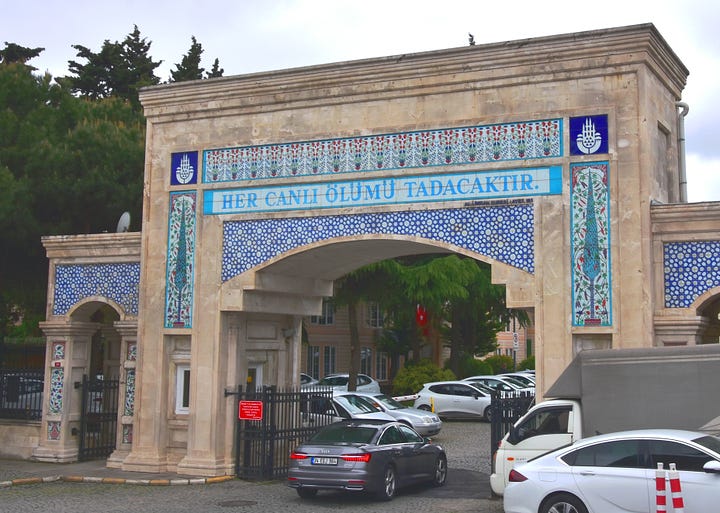
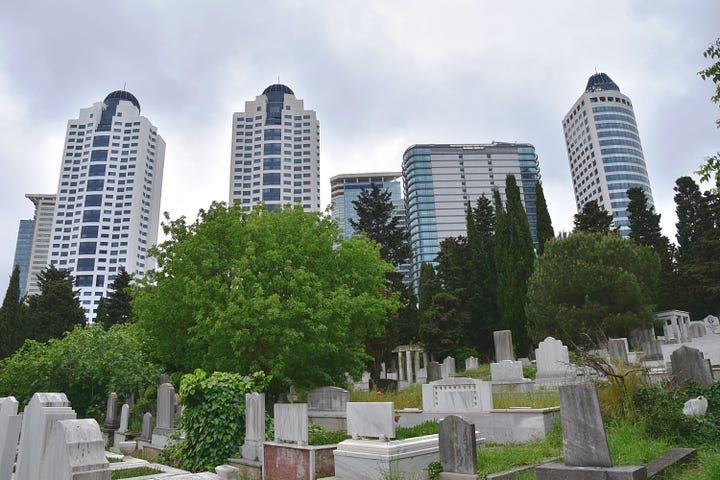
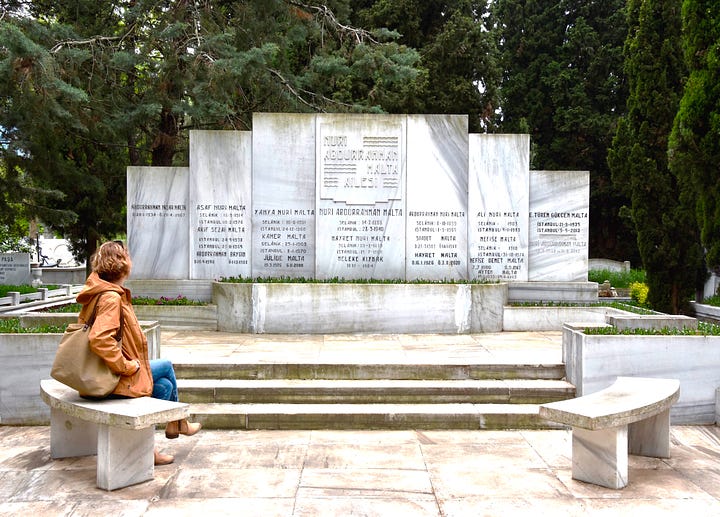
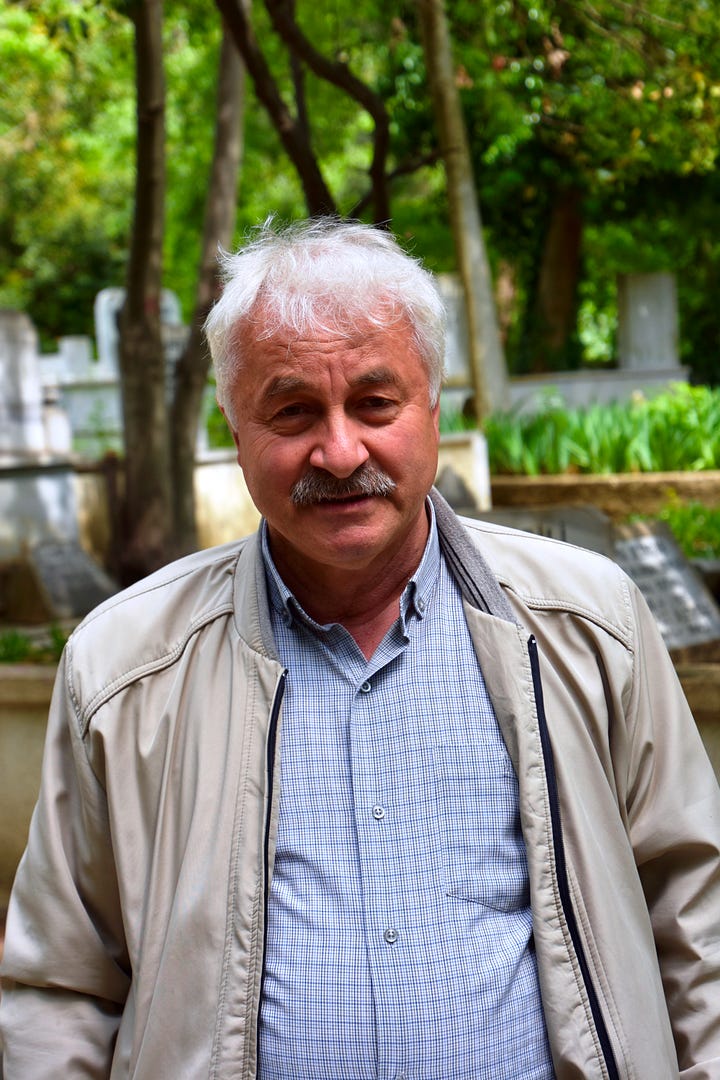
The first image is the entrance to Zincirlikuyu Cemetery. The words above the arch read, "Every living thing will taste death." There is a cafe and playground within the cemetery walls. Eric tells me that the white-mustachioed individual is Zeki Haciosmanoğlu who frequently visits Karacaahmet Cemetery to say prayers over his father's grave and chat with strangers he meets while walking through the densely forested site. The seated woman is Emily Rice Johnson, a long-time expat who goes to these cemeteries as a respite from the noise and concrete of the metropolis.
This led me to wonder what would make cemeteries more appealing to people today, in both urban and rural areas. They are, after all, public green spaces. We complain in Great Barrington about having high taxes but no parks, yet we have several well-sited cemeteries.
What I’ve learned is that the most important factor is providing places to sit down. Not just lone seats, but clustered seating that brings people near enough to one another that conversation is possible. One of our cemeteries (pictured above) is not only in a lovely location, with an expansive view of East Mountain, but has a popular French cafe, Bizalion’s, next to it.
The view is important, as well as trees for shelter. (Unfortunately we lost a lot of trees in that cemetery in the tornado of 1995, but they are coming back.) Things to look at, and linger near, encourage interaction, but it’s seating - especially moveable seating - that makes the difference. The urbanist William Whyte noted this in his book City.
No matter how many other variables we checked, one basic point kept coming through. We at last recognized that it was the major one.
People tend to sit most where there are places to sit.
This may not strike the reader as an intellectual bombshell, and now that I look back on our study I wonder why it was not more apparent to us from the beginning. . . . Whatever the attractions of a space, it cannot induce people to come and sit if there is no place to sit.
Marble monuments that include a bench can be quite lovely, but they won’t do the trick. Whyte notes that sunlight, water, and trees also draw people, along with steps and ledges. Perhaps we could even come to a new way of seeing death, and cherishing the connection with past lives. I wonder if we might then have something like the Chinese Qing Ming Festival,2 Grave Sweeping Day, which takes place in April. Here’s a description from the opening of Qiu Xialong’s wonderful mystery, Shanghai Redemption:
In the seventh century, Tang dynasty poet Du Mu wrote a quatrain about the scene. Around Qingming Occasion, it drizzles / on the heartbroken travelers treading the roads, / "Oh where can we find a tavern, please?" / A shepherd boy points to the Apricot Blossom Village.
Confucius said, "If you present an offering at the graves of the dead, the dead will appear in front of you, as if still living."
In ancient times, Qingming wasn't an easy obligation. For graves that were far away, people had to travel—boat-taking, donkey- riding—carrying offerings, and were often left worn-out and miser- able on a rainy day. In the twenty-first century, there were special Qingming buses. On one such, traveling to the Suzhou cemeteries, Chen Cao, ex-chief inspector and ex-Deputy Party Secretary of the Shanghai Police Bureau, was sitting stiff-backed among a group of grave-visitors as the bus crawled along the congested highway. He thought about Du Mu's lines as he looked out the window, then at his own reflection in the grimy glass. A flurry of raindrops fell from the roadside willows, glistening as if in grateful tears.
There was once a “garden cemetery” movement in the US, and perhaps we need one again.
Happy Halloween!
There is a great deal written on this subject, including Jessica Mitford’s 1963 The American Way of Death and the recent “It’s Mourning in America” in the New Yorker: “Today, in the U.S. and the U.K., death is largely banished from the visual landscape. A century ago, approximately eighty-five per cent of Brits died at home; these days, it’s closer to twenty-five per cent, and around thirty per cent in America. Many of those deaths have moved to the hospital, an often sterile environment where, as during the pandemic, loved ones are sometimes restricted from visiting. When individual bodies show up in newspapers, magazines, and social media, they tend to be exoticized, people not like us.”
Read about the “Qing Ming Festival,” in this article by Haiwang Yuan in the Berkshire Encyclopedia of China.





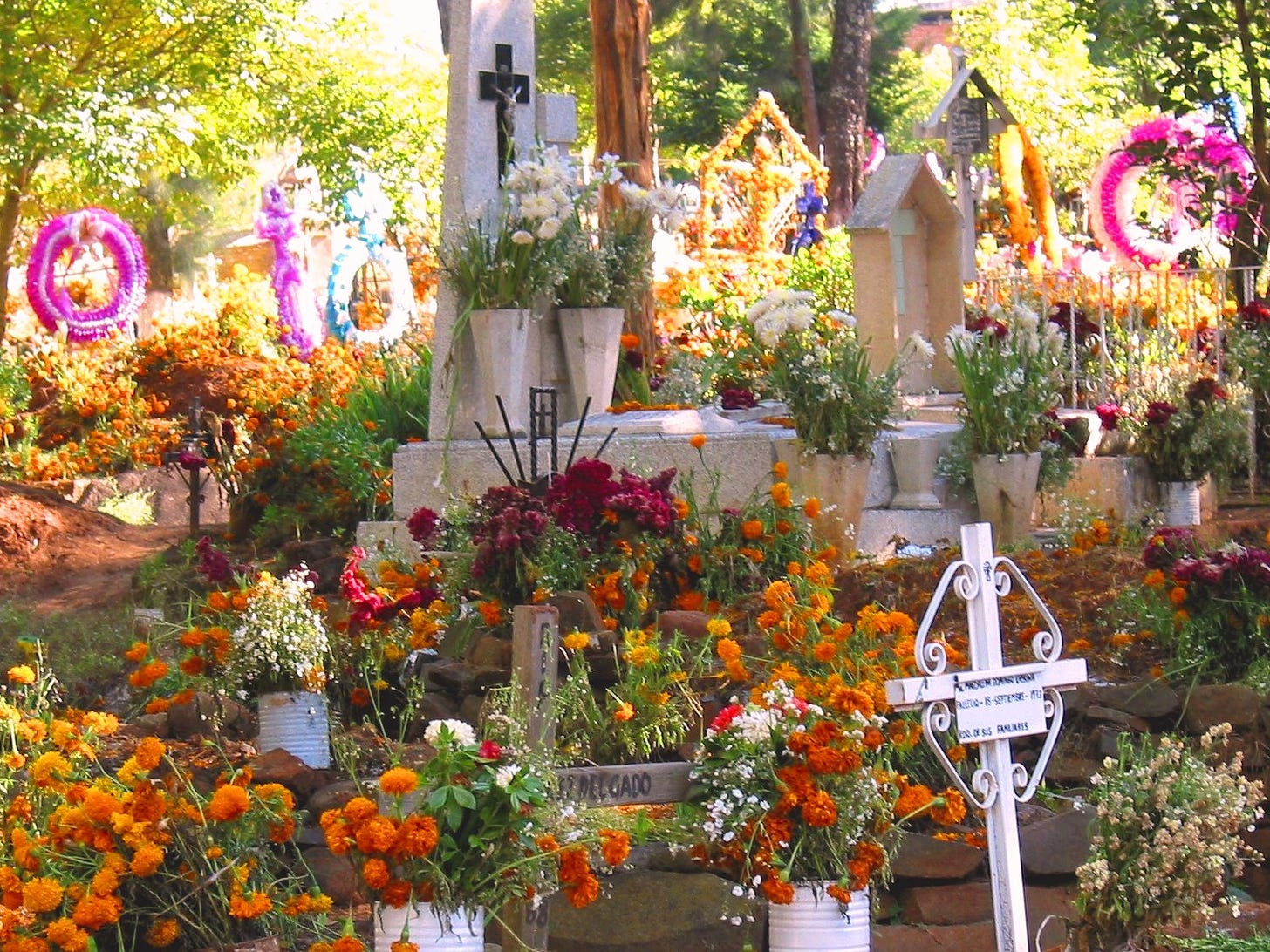

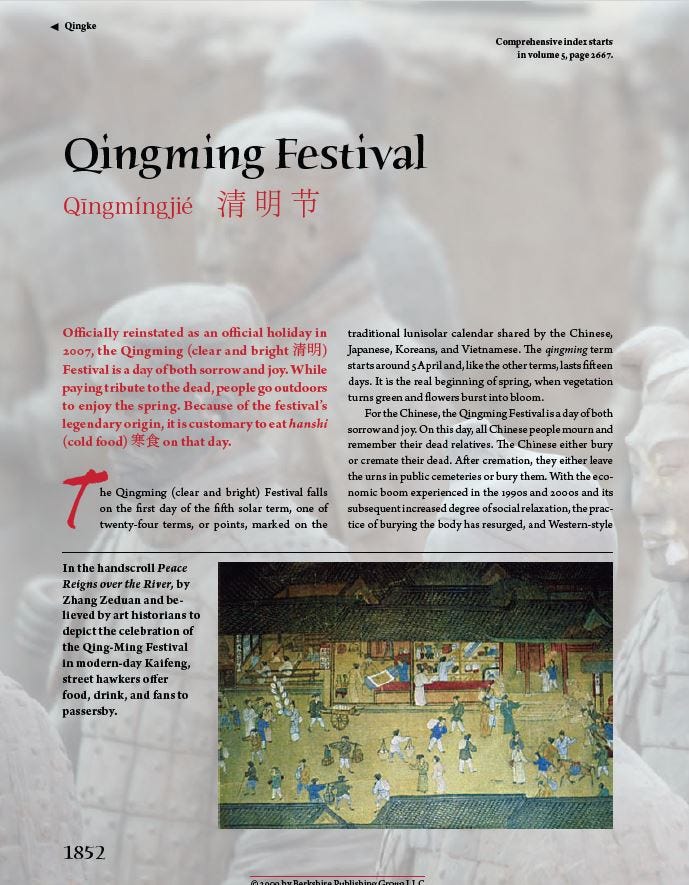
I remember about 30-40 years ago, especially when I was living in the Boston area, that some people were promoting cemeteries as quiet, green spaces nestled in urban environments. They were viewed as places people could walk/run for exercise and kids could play. The notion for promoting them was that they were overlooked spaces in the heart of the city that could have multiple uses, while also respecting those buried there and their families. It sounds like that concept never really took off.
The photo I included was taken in Patzcuaro, a town in the mountains where we were taken by an old friend I'd been able to reconnect with in Guadalajara. I've discovered that there are loads of websites with photos taken in that town, and tours there for the Day of the Dead. (When we were there it didn't seem at all like a tourist destination.) The mountains of marigolds are spectacular. https://zocalofolkart.com/day-of-the-dead-in-patzcuaro-tour/